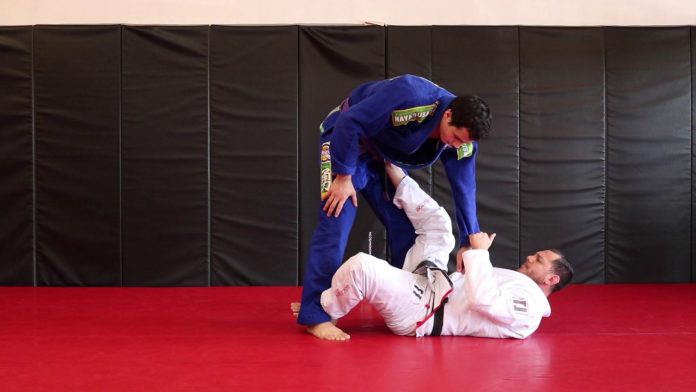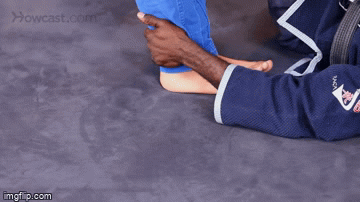
You know those moments in Jiu-Jitsu when things you’ve been doing, or trying to do for a while simply “click”? Well, I’ve had one of those clicks not long ago, and, of course, I have to share my thoughts about it. The concept is simple – why not expand the position we use as guards, to include more checkpoints between guards that are already established? For example, if you’re looking to transition from a butterfly guard to an X guard, you have a fair amount of ground you need to cover, so to speak. What I came across are a couple of sweeps along the way, namely the tripod sweep and sickle sweep, that can actually be used as open guards, or checkpoint guards. After some testing, I’m satisfied with how this concept works.
Sometimes, Jiu-Jitsu is way easier than what we make it be. As Rickson Gracie said, “Jiu-Jitsu is perfect, it is humans who make errors”. In other words, Jiu-Jitsu is simple, and it will only be as complicated as we make it. From time top time, these clicks appear though, that put entire areas of BJJ into perspective. I’ve had quite a few of these clicks in the last decade, but this last one has to be one of my favorites. The tripod sweep and its best friend, the sickle sweep are often regarded only as techniques that work for beginners. Nothing could be further from the truth if we only adjust our approach to them.
The “Checkpoint Guard” Concept
The idea of checkpoint guards (for lack of a better term, at least at present) appeared when I was working on the open guard curriculum for classes in my Academy. The idea was, start in the butterfly guard and work towards some of the most common open guard options that work with the highest percentage of success. Of course, that includes the Single leg X and X guard as the final destinations. However, it appeared to me that going from a butterfly or shin-to-shin guard all the way to X guard often times leaves the bottom player exposed. Most of the transitions are based on explosiveness to a certain degree or making your opponent make mistakes. But what happens when those strategies don’t work?
Well, there’s always the Jiu-Jitsu way of doing things. If there are holes in anything you do, patch them up. So I did, the best I could. The idea was, to use every checkpoint on the road between the butterfly guard as the starting point, and the X guard as the endpoint. Of course, the idea was to have a system that will work equally as good in both Gi and No-Gi. A couple of sweeps kept presenting themselves as options along the way. At first, I disregarded them, thinking of them as “beginner” techniques that would “never work” on a skilled and experienced opponent. But then, luckily, I reconsidered.
What if, when we get to these sweeps, which are already there, we try and remain in place as long as possible? The idea was that you can stay in a submission spot like a D’arce choke for long periods, and use it as a position of control rather than just a choke. Why not use the same concept. As it turns out, the tripods weep and the sickle sweep, both readily available and easy to combine are actually the perfect checkpoints when transitioning between open guards. Henceforth, I dubbed them Checkpoint Guards.
The Tripod Sweep
Out of the tripod and sickle sweep, it is usually the tripod that people learn first. In most cases, it is taught as a reactionary sweep against an opponent that has managed to open your closed guard by standing up. It works like a charm in that context, no arguments there.

The way the tripod sweep is set up, though, often has the leg that hooks behind the knee, until you’re ready to sweep. That is what prompted me to consider the position as a guard, rather than simply a sweep. It is also an important detail into why you can actually pull off using the tripod sweep as a checkpoint guard. More on that later on.
The Sickle Sweep
The sickle sweep is the tripod sweep’s best friend. Actually, it is the fail-safe, for when a tripod sweep does not work. This is rare if you set it up, but it still happens. The sickle sweep works in the same manner as the tripod sweep, with only the positioning of the legs and their motion being different.

You can set the sickle sweep up directly as well, simply by starting off with the appropriate leg posted on the hip. It is also the main entry point for the X guards, particularly the single leg X.
Developing Guard(s) Out Of Nothing
The idea of checkpoint guards using the tripod and sickle sweep really took shape when I did some experimenting. As it turns out, the basic sweep positions are a bit hard to hold as guards. However, it can all be solved with just a slight adjustment in your body positioning. As usual, the devil is in the details, and this time the game-changing detail is the angle.
The task is simple – always try to have your body aligned with the opponent’s feet. In the case of the tripod sweep, this means being in a position like when pulling guard – facing your opponent with your side, rather than being parallel to them. This is the detail that will turn the tripod sweep into a powerful position of control you can hold. Moreover, it makes your opponent shift base awkwardly making the sweep much more potent as well. A cool side-effect.
With the sickle sweep, things get a bit trickier. Opponents often try to skip past the leg that is hooking, which can leave you in a vulnerable position. This is where that cross grip you have on the arm becomes really important. Use it to pull the opponent forward, so that you take away both their posture (thanks to the leg on the hip) and their balance (thanks to the hooking leg). You’ll find it really easy to hold and control, even with a No-Gi grip.
Finally, the transitional options are endless. The tripod sweep checkpoint leads to De La Riva, X guard, and Singel leg X with ease. The sickle sweep checkpoint offers single leg X, 50/50, and Ashi Grami entries. The best thing about it is that you can use these checkpoint so both enter, and exit these guard positions.
Wrap Up
The idea of checkpoint guards probably exists out there. I just haven’t been lucky enough to find someone to explain it to me. So I had to figure it out on my own. Just in case there’s someone out there that is in the same situation, I hope this breakdown of the concept helps put things into perspective. Moreover, any feedback is more than welcome. Have at it!













































